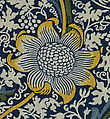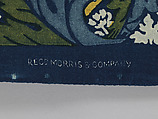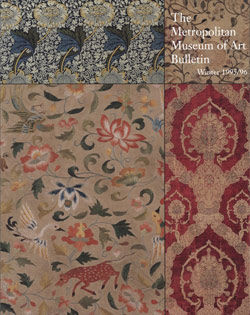Kennet
Designed by William Morris British
Manufactory Morris & Company
Not on view
As one of the forerunners of modern design, Morris took much of his inspiration from the arts and crafts of the past. His disgust with the inferiority of many Victorian industrially made textiles, which he found lacking in both quality and appropriateness of design, led him to study the aesthetics and techniques of earlier historic examples-from tapestries to embroideries. This knowledge enabled him to take inspiration from the past while still creating for contemporary needs. Thus, a two-dimensional design such as "Kennet" could be—and was—successfully used for wallpaper, woven silks, and printed fabrics. The effect in each medium, however, was altered by choices in color combinations (bold or subtle), materials (shiny or matte), and textures (flat or pile). While the undulating flower stalks look back to Italian fifteenth- and sixteenth-century velvet designs, they also presage of Art Nouveau.
Due to rights restrictions, this image cannot be enlarged, viewed at full screen, or downloaded.
This artwork is meant to be viewed from right to left. Scroll left to view more.






